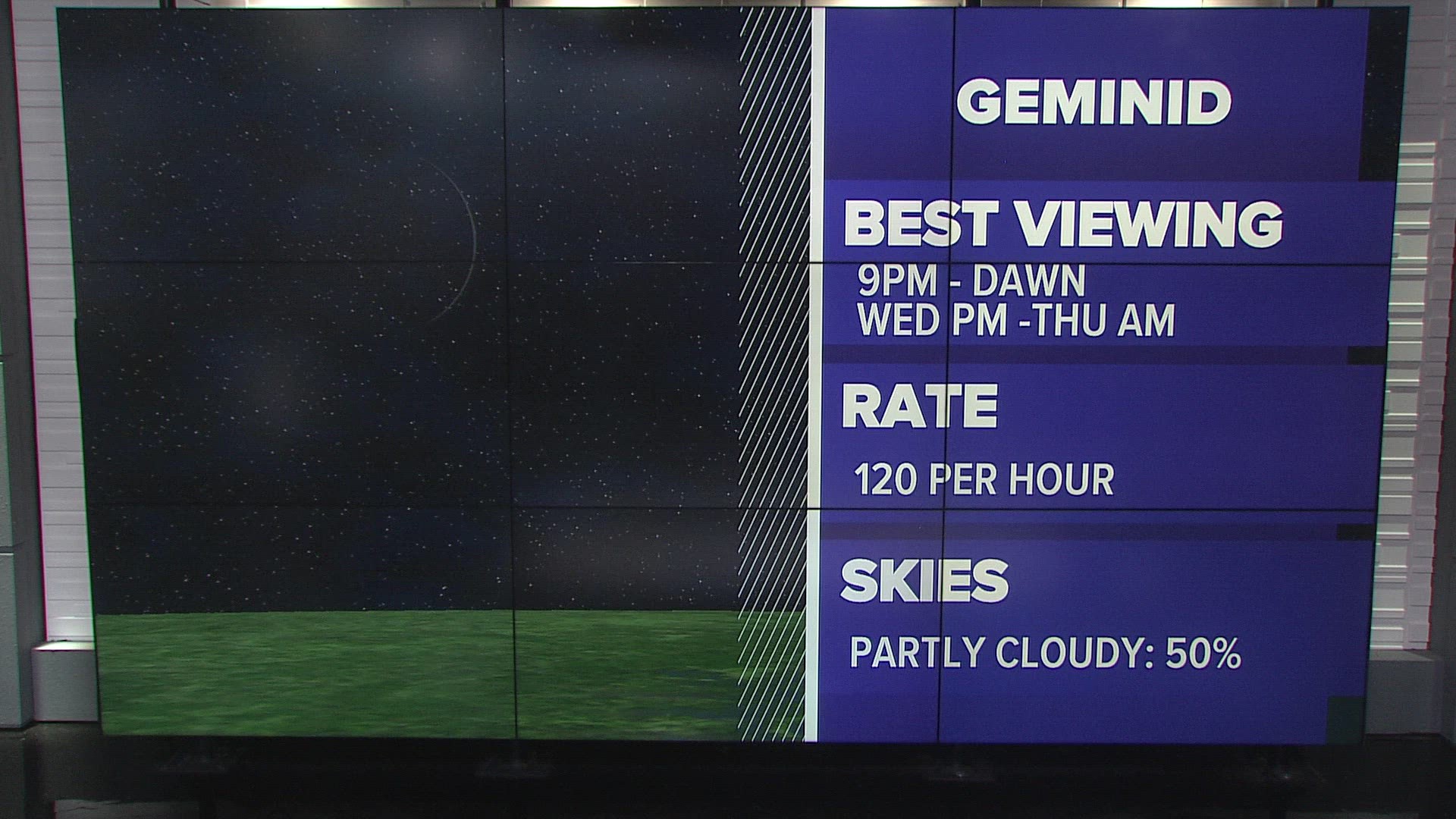SACRAMENTO, California —
A celestial show is set to light up the skies on Wednesday night and Thursday morning as the Geminids meteor shower peaks.
The Geminids meteor shower first appeared in the mid-1800s and has been steadily improving throughout the years. It is now considered one of the best, if not the best, meteor showers of the year.
“Studies of past displays show that this shower has a reputation for being rich both in slow, bright, graceful meteors and fireballs as well as faint meteors, with relatively fewer objects of medium brightness,” according to space.com.
Space.com also describes 2023 as a "superb" year for viewing the Geminids due to the moon being a skinny crescent in the sky, so the sky will be quite dark.
Even though it will be a peak viewing year for many, that will not be the case here in Northern California. Cloud cover is expected to build in on Wednesday night, lasting through Thursday night and beyond.
NWS Sacramento is currently forecasting partly cloudy skies on Wednesday and mostly cloudy skies on Thursday, but there should still be pockets of clear sky for those who stay up to view the event.
Even with cloud cover expected, the type of cloud in this situation matters. In this case, high, wispy-like cirrus clouds, which are easier to see through than other types of clouds, are expected to build into the region.
Cold temperatures are also on tap Wednesday and Thursday night.
If you do plan on checking out this event, make sure to bundle up as temperatures will dip into the 30s overnight in the valley while the Sierra lows will be in the 20s and teens.
During peak viewing hours, which goes from 9 p.m. until dawn, up to 120 meteors per hour are visible, according to NASA.
“Lie flat on your back with your feet facing south and look up, taking in as much of the sky as possible. After about 30 minutes in the dark, your eyes will adapt and you will begin to see meteors,” wrote NASA regarding the optimal viewing experience.
WATCH ALSO:

















